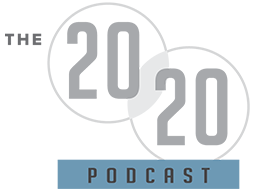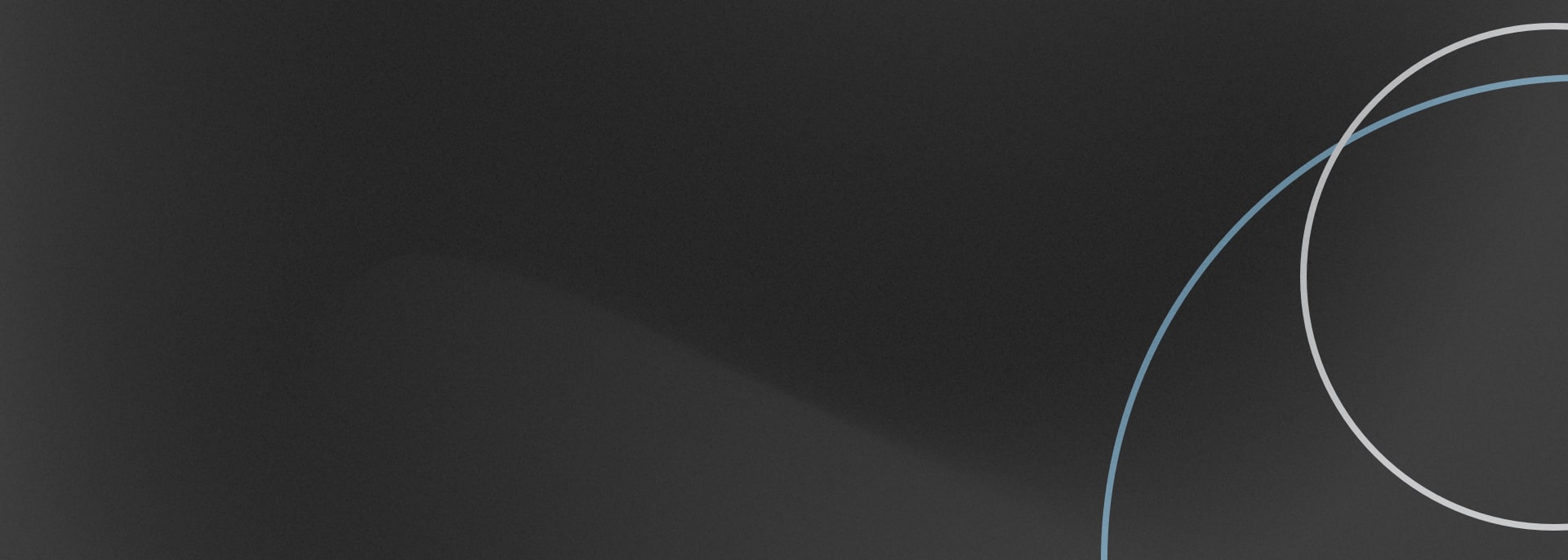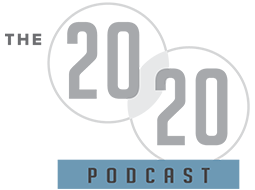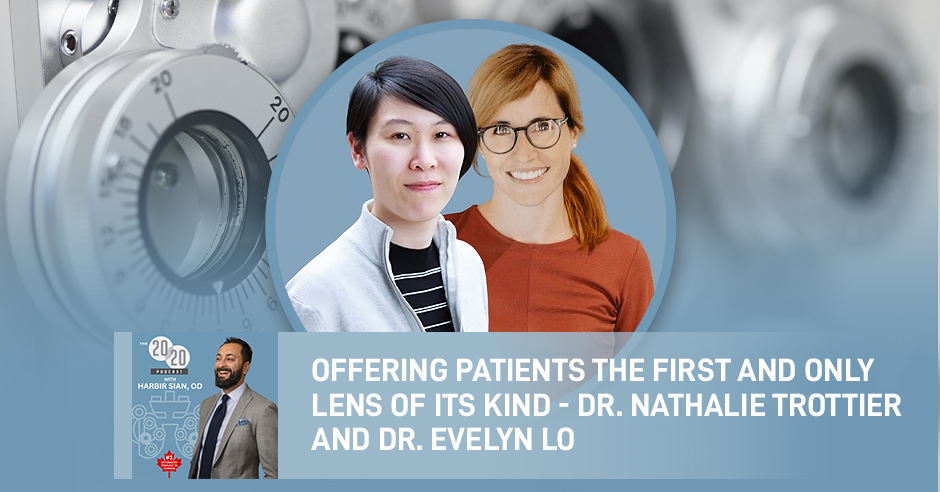
It is not often that we have the opportunity to witness the launch of a whole new class of soft contact lens. But today, we have the unique opportunity to explore CooperVision’sMyDay Energys®. Joining Harbir Sian to talk about the first and only daily disposable lens in the industry to offer DigitalBoost™ technology are Dr. Nathalie Trottier and Dr. Evelyn Lo. Together, they explore how this lens combines innovative aspheric design and material technology to deal with eye dryness and fatigue due to digital device use. They also discuss how the MyDay Energys® contact lenses can provide comfort to its users and offer visual endurance.
Big thanks to CooperVision for supporting this episode.
—
Watch the Episode here
Listen to the Podcast here
Offering Patients The FIRST And ONLY Lens Of Its Kind – Dr. Nathalie Trottier And Dr. Evelyn Lo
Welcome back to another episode of Canada’s number one optometry show. I’m your host, Dr. Harbir Sian. Thank you, as always, for taking the time to join me here. I’m super excited. We are at the BCDO. If you’ve heard me talk about this before, this is my absolute favorite conference. I’m not being biased because I’m from Vancouver, and I’m on BCDO. It’s because it is the best conference in Canada by far, and everybody agrees. Trust me. We’re here in Vancouver at the beautiful JW Marriott. This episode is in partnership with CooperVision. We’re going to be talking about their exciting new lens, the MyDay Energys®. We’re going to go into details about why this lens is amazing, who can wear this lens, and why you want to fit your patients in it.
To talk about this beautiful product, I have two amazing guests. On my far left, I have Madam President, the president of the BC Doctors of Optometry, Dr. Evelyn Lo. She’s a partner at Mount Pleasant Optometry. Next to me here, I have Dr. Nathalie Trottier from Montreal. She was, up until recently, a practicing optometrist with fifteen years of clinical experience and a myopia management expert. I’ve had the absolute pleasure of speaking with her and presenting with her. Now, she represents CooperVision. She is the Senior Manager of Professional Affairs and Academics at CooperVision. She’s the perfect person to talk about this brand-new lens. First of all, thank you, guys. Thanks for coming. Thanks for being here.
Thank you.
Introducing Dr. Nathalie Trottier And Dr. Evelyn Lo
If you don’t mind, why don’t each of you give a little bit of an introduction of yourself? I know I gave a brief one. Is there anything else you want to share about yourself from the long list of amazing accomplishments you have?
The only thing I would probably add now is that I’m working on my MBA. The best part of that is understanding how industry, business, and optometry all come together, and that healthcare is a business as well. We have to keep that in mind, but at the forefront of that is vision care. It’s always nice to know what’s on the leading edge in terms of the new products that come out, and how we can make sure that we offer that to our patients.
I’m learning more and more throughout my career. First of all, the business side of things is so vital, especially as a business owner. Even if you’re not a business owner, you’re an associate optometrist, there’s still so much value in learning the business side of things, as far as improving your own career. You’re talking about revenue income. You’re generating your own income as an associate. If you understand the business better, you are more likely to have a more fulfilling career in that sense.
One of the other things I’m learning as I’m moving in my career is the importance of partnering with industry. I talk about this all the time. I hug my reps, and it’s so important because it helps to build the business. I always feel grateful when I have the chance to partner with companies like Cooper because it helps our business grow and helps me to feel more fulfilled in my career. You’ve gone from being an optometrist to working in the industry specifically. Tell us a little bit about your journey.
It was a very interesting journey. It’s been fifteen years since I was in practice. I needed a new challenge, so I said, “Why not try to make a big jump in the industry to learn the other part of it, and learn also about business, sales, and everything?” That was something that I was passionate about as well. I like teaching and I like giving lectures, so I said, “Why not do that every day?”
Presenting MyDay Energys® Contact Lens
That sounds perfect. You’re now in that position to provide education, to teach, and to do all these amazing things. It’s been a pleasure to be able to get to know you better. Let’s talk about this product. Let’s talk about MyDay Energys®. First of all, give us a little high-level. What is this product? Why is it so unique?
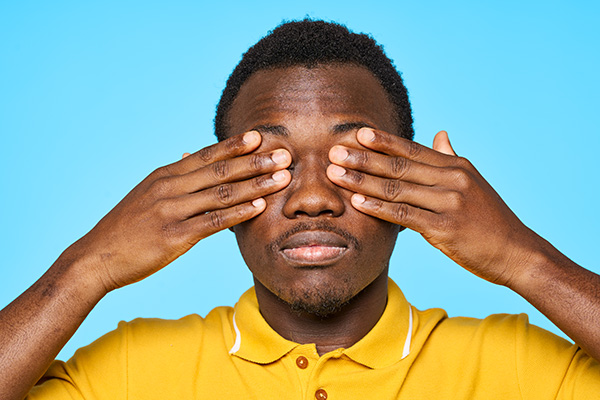
We know that digital devices are everywhere. In our hands, we hold a device that has our communication, work, family, social media, and entertainment. We’re always connected anywhere, anytime, but the problem is that when people are in front of those devices for a long time, a lot of them have visual symptoms related to it. You can see it in your practice. A lot of people have those symptoms. They say that 71% of people have those. That’s every day in our practice.
We have two major symptoms. First, we have eye dryness because the blinking rate decreases when we’re in front of electronic devices, so we’re having more eye dryness and foreign body sensations like that. It also creates a burden on the accommodation system. We have more eye cooling, fatigue, and things like that. All of that creates a lot of discomfort. We now have a solution for our contact lens wearers that helps to release those symptoms. MyDay Energys® is the first innovative one-day contact lens created for that.
It has the DigitalBoost™ technology on top of the existing MyDay® lens, which has been around for a while and has been successful. We’re talking about this thing in my hand. This is our digital lifestyle. We all get that pop-up on our phones. Mine comes on a Sunday. I don’t know if that’s the case for everybody, but I get a pop-up on a Sunday morning. Here’s how many hours you’ve been spending on your phone each day on average, or whatever it is. For me, it’s like five hours a day, which is quite a bit.
You’re in the average because 96% of people spend more than five hours per day in front of a digital device. Sometimes, you have more than one. You don’t have only one. When I’m working, I have two screens. I have two phones. You always need to switch from one device to the other.
Now, we have a contact lens that supports our eyes for these functions. Evelyn, you’ve had an early exposure to this lens. Tell us how it’s been for you and your clinic. What types of patients are you looking at for these lenses?
I’ll start by saying that I was a little skeptical in the beginning. What I thought of the lens initially was that it’s the same thing. I didn’t realize that the asphere design of it, and the 0.3 add would make such a difference. I had a patient who was 42. She came in and -6. She says it’s blurry. She had 20/20. I was like, “She’s probably having a spasm.” We put her in a different lens. She’s like, “It’s blurry,” still 20/20. We put in every single lens. She still says it’s blurry. She’s very unsatisfied at this point. Just in time, I was like, “Last option. Let’s try this. Nothing to lose.” We did, and she didn’t have anything blurry.
I asked her what the difference was. She was like, “I can’t tell you.” It was so interesting. She couldn’t explain it to me, but the fact that she said the blur was gone but she was still seeing 20/20, tells me that the 0.3 add was all she needed to relax enough of the accommodation, so she wasn’t going into her fluctuation. That is the story where I truly understand the importance of it for presbyopia patients. I find that that’s what helps the most, or the patients who are studying, and they’re like, “I’m feeling a little tired, but I don’t want anything else. I don’t want to put on like +0.5.” That’s where the game changer is.
Benefits Of The 0.3 Diopter Boost
You’ve teased it a little bit, this DigitalBoost™, Evelyn has talked about that +0.3 add. We’re going to talk a little bit about the science of that, and why that 0.3 is important, and where it helps. One thing I talked about is that I like to prescribe anti-fatigue glasses a lot. I have prescribed them to a whole range of patients. It’s not just presbyopia or a certain age range. It’s from teenagers up to presbyopia. It’s not just because there’s a bit of early presbyopia or a lack of accommodation. It is because it helps to relax the accommodative system. It allows our eyes to work more comfortably.
There’s a term of visual endurance or that kind of feeling of accommodative endurance, where you can function longer and more comfortably. That’s why I prescribed anti-fatigue a lot. I hope CooperVision doesn’t mind me saying this. This is essentially an anti-fatigue contact lens. For me, it opened up a lot of doors and a lot of opportunities for a lot of patients to prescribe it in that sort of vein. Why don’t we talk a little bit about the details of the science behind it? Why does the 0.3-add benefit the patients?
There are three key features in those lenses. First, you have the Aquaform® technology. That’s the technology behind the material. It’s the same technology as the Biofinity® that everyone knows and that everyone has prescribed. It’s long chains of silicon with little hydrophilic arms. Those little arms are keeping the water molecules inside the lens. That way, the lens stays moist all day long without a coating agent. At the end of the day, the patient is comfortable. That’s the Aquaform® technology.
96% of people spend more than five hours a day in front of a digital device.
You then have the DigitalBoost™. The DigitalBoost™, as we mentioned, is a 0.3 diopter boost in the very center of the lens. With that, it released the burden to maintain the accommodation. Just a little example that I like, and I think it visualizes this. We all did the wall sit in high school. To do the movement is quite easy, but the problem is that when you spend a lot of time doing it, your legs start to shake. They’re starting to have some fatigue. That’s the same thing with our eyes when we’re in a visual task for a long period of time. The ciliary muscles are starting to feel fatigued. That’s where we ease that burden with that DigitalBoost™.
That shaking of the muscle when it starts to get tired, it is not like blindly putting a 0.3 add into the lens, and let’s see what happens. There’s some research and science behind it. That shaking of the muscle, what’s the term that we’re using to describe that?
It’s Accommodative Micro-Fluctuation, AMS.
Scientists and researchers were able to measure those fluctuations in the ciliary body, and measure those fluctuations with the Energys® lens on top, and see the difference.
They do it after the patients who were using the electronic device had been reading for 20 minutes on it. The patients who were using the DigitalBoost™ technology had less AMF. They had 0.25 diopters less. That’s where that 0.3.
Comparing Contact Lenses
It was a measurable difference. Lower AMF in the patient where the Energys® lens with that DigitalBoost™. I’ve had the privilege of speaking on this, so I got to learn a little bit about the science behind all of this. There was a study that I loved, if you could both speak to it. We’re comparing contact lenses. We have to pick a brand from Brand A, their best premium lens, daily, disposable, side high, all of that, and I go to Brand B and pick their best premium side high.
Even though you’re saying it’s in the same category, it’s not comparing apples to apples. The molecules in the material are different. The base curve is different. The diameter is different. It’s hard to say, “All our lenses are better because of ABC or XYZ,” but there was a study that did apples to apples. I wonder if you could tell us about that.
The patients who were using the MyDay™ Sphere, and also the patients compared to MyDay Energys®. They compare their visual symptoms, their visual comfort between those lenses. Eighty percent of patients felt more comfortable. Even with their end-of-day dryness, they feel more comfortable with the MyDay Energys®. We know that’s the same material. We see that there’s synergy between the visual comfort and the physical comfort. Your eyes are less strained, so you can blink normally. You don’t have to strain all the time. While you’re doing that, your eyes feel more comfortable. I had an ECP who told me, “I know it’s the same material, but my eyes are less dry at the end of the day. That’s amazing.”
Part of that is the fact that when you look at how dryness is associated in terms of its symptoms, often it can be associated with just fatigue. We don’t have a better word to understand the tiredness, but when you alleviate that, this is a perfect example to show that it is correlated.
It’s hard to find sometimes the good terms. You feel uncomfortable, but it’s hard to pinpoint it.
If we do not talk about sustainability, there won’t be a planet. There won’t be us. There won’t be an aspiration.
That’s pretty remarkable. You compare two exact same lenses, exact same material, base curve, everything. All you do is you change the DigitalBoost™, 0.3 add in the middle of the lens, and 80% of patients are noticing less dryness, less fatigue, tired eyes, and all of that. That’s pretty remarkable. That tells you that’s the one different factor. It was the DigitalBoost™. I have a patient story myself because I was fortunate enough to have access to the lens a little bit early as well. I’ve got it on some eyes.
A few days ago, before we came to BCDO, I had a follow-up with a patient. It’s the same thing. She’s like, “This is the first lens in a long time that my eyes don’t feel dry.” She has dry eyes. I’m treating for dry eyes and that kind of thing. It’s not that I treated her with dry eyes and then put her in this lens. We’ve been actively trying different lenses, like your patient. She’s like, “This is the first one. What’s different about this lens?”
I was like, “A unique new technology and so on.” She’s like, “Is there something else that’s like this lens that I could also try?” I was like, “Nope. This is the only one. The unique lens. The first in class that has a DigitalBoost™.” It was cool to see that it wasn’t the vision so much for her. It was the comfort that she noticed an immediate difference there. Your story is interesting, Evelyn, where the patient was like, “I can’t tell you what’s different, but it’s better.”
We couldn’t measure her subjective blur. You have to listen to the patient. When you do, you’re like “Oh.” I’ll share a different story with you, which is more of a pediatric case. I learned this from another colleague. This child was eight, if I remember correctly, +50. You know how it’s like 20/30 vision, a little squinty, but not all the time. I was like, “We’re going to correct it. Your options are +50 glasses or +50 contact lenses.” We did the +50 glasses because the mom was not quite sure if she wanted them full-time, wearing them. The child did. The next thing you know, they’re like, “We’re reading and it’s still a little hard.” We go, “If you’re wearing this all the time, let’s try the contact lens.” We tried contact lenses with +0.3, and no issue. It’s very similar to what you’re saying, anti-fatigue.
I hope Cooper doesn’t mind that analogy. I feel like it’s a good analogy. I had prescribed anti-fatigue so much, and it works so well. It’s cool to have that type of technology in a contact lens as well. To go back to your patient, Evelyn, that’s a cool story as well. The one that had that 20/20 vision but sort of subjective blur, there was something I learned as I was reading through the materials and presenting on the Energys® lens.
They did a computer simulation where they used the point spread function. They did these computer algorithms or whatever to create a visualization of what a patient would see. Point spread function for optometrists, if you remember this optics. I’ve forgotten it, but when a beam of light hits the retina, how much does it spread? Different lenses will create different point spread functions. The broader the spread, the less resolution. What they found was that with the DigitalBoost™, there was a tighter point spread function.
More resolution when looking at different distances. The optics are generally better. That might be what creates that subjective improvement, 20/20, but 20 happy now. I find that nerdy and cool. If anybody is interested in learning more, don’t ask me. Go ask your Cooper rep. They will share with you more information. I want to talk a little bit about something different, but Cooper-related. Is there anything else we want to share about this lens before we change topics?
There’s a UV blocker, which is the cherry on top.
Partnership With Plastic Bank®
We can come back to contact lenses if there’s something else we think of before we wrap up. You and I had an amazing opportunity to travel to Bali with Cooper and learn about and experience their partnership with Plastic Bank®. For those who are uninitiated, who don’t know about this partnership, what is that? What did we do there?
My understanding of that partnership is that CooperVision, through purchasing contact lenses, a portion of that goes towards Plastic Bank®. Plastic Bank® then has a group of individuals in different countries. They are boots on the ground. They go in and collect the plastic from the oceans. Specifically for our case, it was plastic bottles. Once they take that plastic, they go ahead and recycle and sort through that plastic. People in developing countries get a stipend as a result of doing the work, which can then contribute to allowing their children to go to school. They can get the books and supplies they need. They can put food on the table and provide for the family.
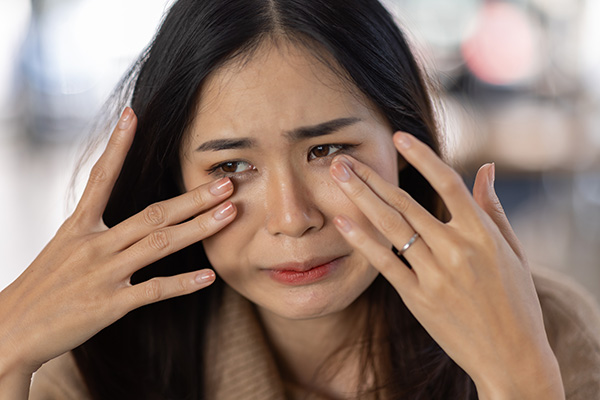
Pretty remarkable partnership. They’re cleaning up. That’s obviously one. They are getting the plastic out of the water, but what makes it sustainable is the fact that the people in these developing countries would clean up the plastic. They make money and generate income from this. That few dollars a day or whatever that income becomes is a big difference for them. It allows them to put food on the table, and there are other aspects where they provide them access to certain types of care that they were not able to access.
We had the privilege of going and waiting through the water in the mangroves, bagging up plastic. We then went to the sorting sites and sorted them, and then we went to see where it got packaged. It was an amazing experience and a very cool partnership. I think you have some thoughts to share on that, too.
We learned that the initiative is now at the equivalent of 500 million plastic bottles, half a billion. That’s amazing, and everyone participated in it.
Meaning everybody who is a Cooper customer and purchases is a part of this program because Cooper is partnering with Plastic Bank®. It was amazing. I was grateful to be there for that experience.
We also had the chance to go to Costa Rica at their facility. Everything is thought out throughout their sustainability as well. Even the way they bring the employee. Instead of having to come all in their car, they’re coming by bus. We even have to facility in Western Utah in the States that runs on wind power. There’s so much more that CooperVision has the way in that regard.
Prioritizing Sustainability Right Now
That’s good to know. I didn’t know that either. We learn something every day, and it’s cool that it’s front of mind for such a big company and a global company. That sustainability and environmental impact are something that’s front of mind. Any other thoughts you want to share? Anything about the Plastic Bank® experience or anything about Energys® that we want to share before we wrap up?
I’ll say one last thing. I think it’s important to make sure that the individuals with whom we partner, or companies with whom we partner, make sure that there’s value not just for our patients, for optometrists, but for the planet. At the end of the day, if we don’t talk about sustainability, there won’t be a planet, there won’t be us, and there won’t be an aspiration. That’s one of the things I’ve learned through my MBA course. Companies that are looking forward will always have sustainability in mind.
I want to share something from our friend, Dr. Wes McCann. When I had him on the show a little while back, he shared his three Ps for how he makes decisions: patient, practice, and profession. I think we can add a fourth P. I think we can add planet to that, patient, practice profession, and planet. When we’re making our decisions and choosing who to work with, that’s a great addition. Anything else you want to share?
I feel like we have a very nice product, and it also has the PCP to differentiate itself, and offer something that’s not everyone, so it helps the patient every day.
Something we didn’t touch on is differentiation. We want to be the ones to provide the latest and greatest to our patients. We don’t want them to learn it somewhere else. This is an opportunity once again for us to say, “Patients, I have something unique for you. Something new for you that you’ve never seen before, that’s going to provide you with an experience and comfort that you’ve never had before.” I want to be the person to give that to my patient. Here’s another opportunity for us to do that.
Thank you, guys, for doing this again. I love this conversation. Thank you to CoopeVision for partnering and doing so many great things for the profession as well. Thank you to the BCDO for providing us with this space, and thank you for always elevating optometry in BC. We are at the beautiful JW Marriott. This is a wonderful venue. The conference has been amazing as always. Thank you, BCDO. Thank you, everybody, for tuning in to Canada’s number one optometry show. We’ll see you guys in the next episode.
Important Links
- CooperVision
- MyDay Energys®
- BC Doctors of Optometry
- Dr. Evelyn Lo on LinkedIn
- Mount Pleasant Optometry
- Dr. Nathalie Trottier on LinkedIn
- Good For Your Patients, Good For Your Practice, Good For The Profession – Dr. Wes McCann
About Dr. Nathalie Trottier And Dr. Evelyn Lo
 Dr. Nathalie Trottier is a former practice owner with 15 years of clinical experience, a Myopia management expert, and Senior manager of professional affairs and academics at CooperVision.
Dr. Nathalie Trottier is a former practice owner with 15 years of clinical experience, a Myopia management expert, and Senior manager of professional affairs and academics at CooperVision.
Dr. Evelyn Lo is the President of the BC Doctors of Optometry, and Partner in Mt. Pleasant Optometry, in Vancouver.
